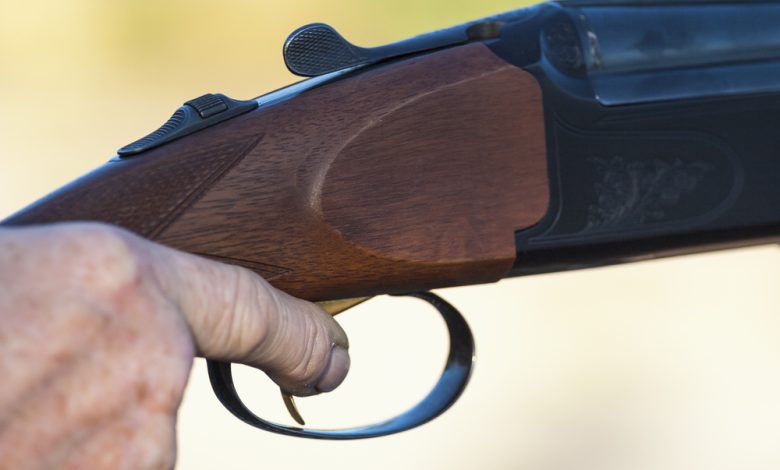What is Rifle Trigger Discipline & The Importance Of It?

Rifle trigger discipline (sometimes called “trigger control”) is the practice of being aware of and managing the trigger finger position on the firing mechanism of a rifle so as to minimize the inadvertent discharge of rounds. Poor trigger discipline can lead to unwanted and potentially catastrophic results, such as unintentional shots being fired, missed shots, or even shooting oneself or a fellow shooter. Good rifle trigger discipline is key to safe and successful rifle shooting. In this article, we aim to highlight the meaning of trigger discipline, and why it’s so important.
Read ahead to learn more!
Before anything else, it’s important to know and understand what is trigger discipline.
Rifle trigger discipline begins with being aware of the firearm’s trigger. The trigger is the small, finger-sized lever that, when squeezed, fires the rifle’s round. Rifle triggers can be very sensitive, and even the slightest pressure can result in a discharge. For this reason, it is important to always handle the rifle trigger with care.
In order to maintain trigger discipline, the shooter must keep their finger off of the trigger until they are ready to fire. This means not putting any pressure on the trigger until you have taken aim and are ready to shoot.
It can be difficult to maintain total focus on the target when you’re handling a powerful firearm, but it’s important to make every effort to keep your finger off the trigger until you’re ready to fire.
Why is Rifle Trigger Discipline Important?
Rifle trigger discipline is so important because, if done correctly, it allows the shooter to fire their rifle with precision and accuracy. Poor trigger discipline can lead to shots being fired unintentionally, missed shots, or even shooting oneself or a fellow shooter. By contrast, good rifle trigger discipline can help you take accurate shots with your rifle while minimizing the risk of an accidental discharge.
It is important to always be aware of your surroundings and make sure that no one else is in danger before firing. Never fire a rifle without being absolutely certain of your target and what is behind it. It’s also important to be aware of the type of trigger you are using. In the case of a flat trigger, the trigger pull length is going to be uniform no matter where the trigger finger is placed.
How Can You Improve Your Rifle Trigger Discipline?
There are a few things you can do to help improve your rifle trigger discipline:
- Firstly, be aware of where your trigger finger should be at all times when handling a rifle – this means keeping it off the trigger until you are ready to fire.
- Secondly, always keep your rifle pointed in a safe direction, away from bystanders and other shooters.
- Thirdly, practice! The more you practice firing your rifle, the better you will become at doing so safely and accurately.
Additionally, one common mistake shooters make is prematurely squeezing the trigger while re-acquiring their target. This is often referred to as “trigger jerking” and can be very dangerous.
When you jerk the trigger, you can cause the rifle to move off target, leading to a miss. A sudden movement of the rifle can cause the round to fire before you’re ready, which can lead to injury or death. A good trigger finger discipline helps to avoid such errors. To avoid this, make sure to take your time when re-acquiring your target and only squeeze the trigger when you’re ready to fire.
What are the Consequences of Poor Rifle Trigger Discipline?
There are a few potential consequences of poor rifle trigger discipline:
- Unintentional shots being fired – this could cause injury or damage to property, or even kill someone.
- Missed shots – this could mean the difference between hitting your target and missing it entirely.
- Shooting oneself or a fellow shooter – this could result in serious injury or death.
All of these consequences underscore the importance of practicing good rifle trigger discipline. It may seem like a hassle to always be aware of your finger placement and surroundings, but it is crucial to remember that safe shooting is everyone’s responsibility. With a little bit of practice and caution, we can all maintain excellent rifle trigger discipline and shoot with precision and accuracy.
How Can You Prevent These Consequences?
There are a few ways you can prevent these potentially dangerous consequences:
- First and foremost, practice good rifle trigger discipline – this means keeping your finger off the trigger until you are ready to fire, keeping your rifle pointed in a safe direction, and being aware of your surroundings.
- Secondly, be aware of the laws governing firearms in your area and ensure that you are familiar with and obey all the relevant safety regulations.
- Finally, always keep your firearms in a safe and secure place when not in use. This will help minimize the risk of an accidental discharge.
Wrapping up
In conclusion, good trigger discipline is an essential part of safe and successful rifle shooting. It is something that must be practiced and maintained at all times. By following the guidelines mentioned above, you can help minimize the risk of accidents and injuries while maximizing your accuracy and precision.





